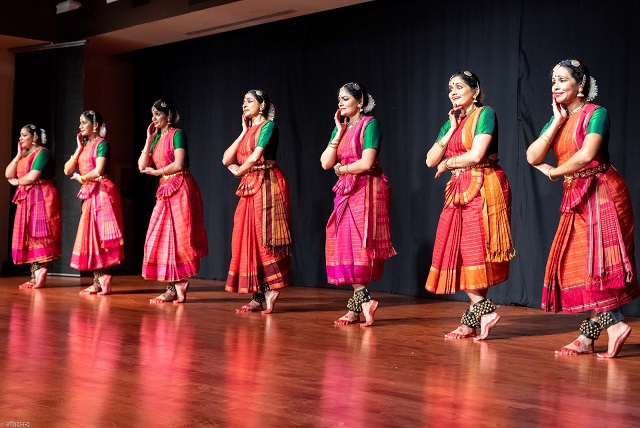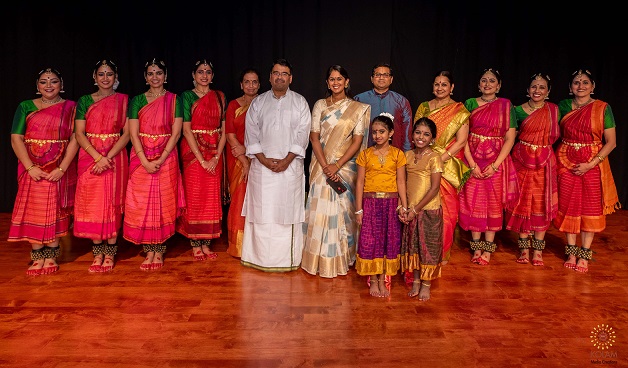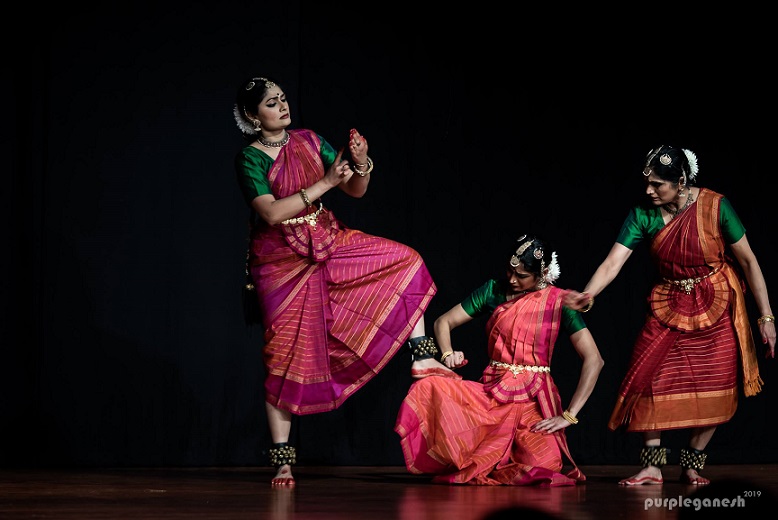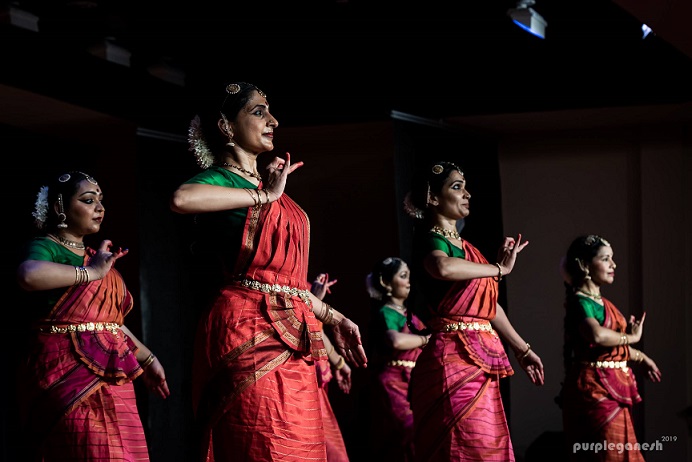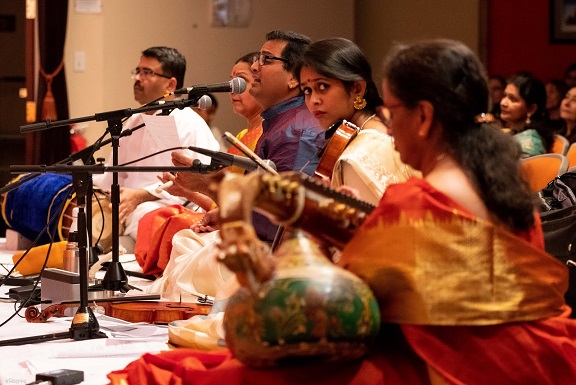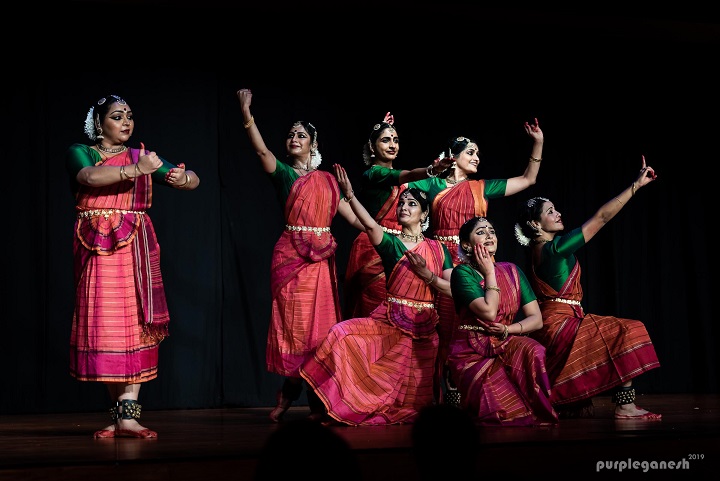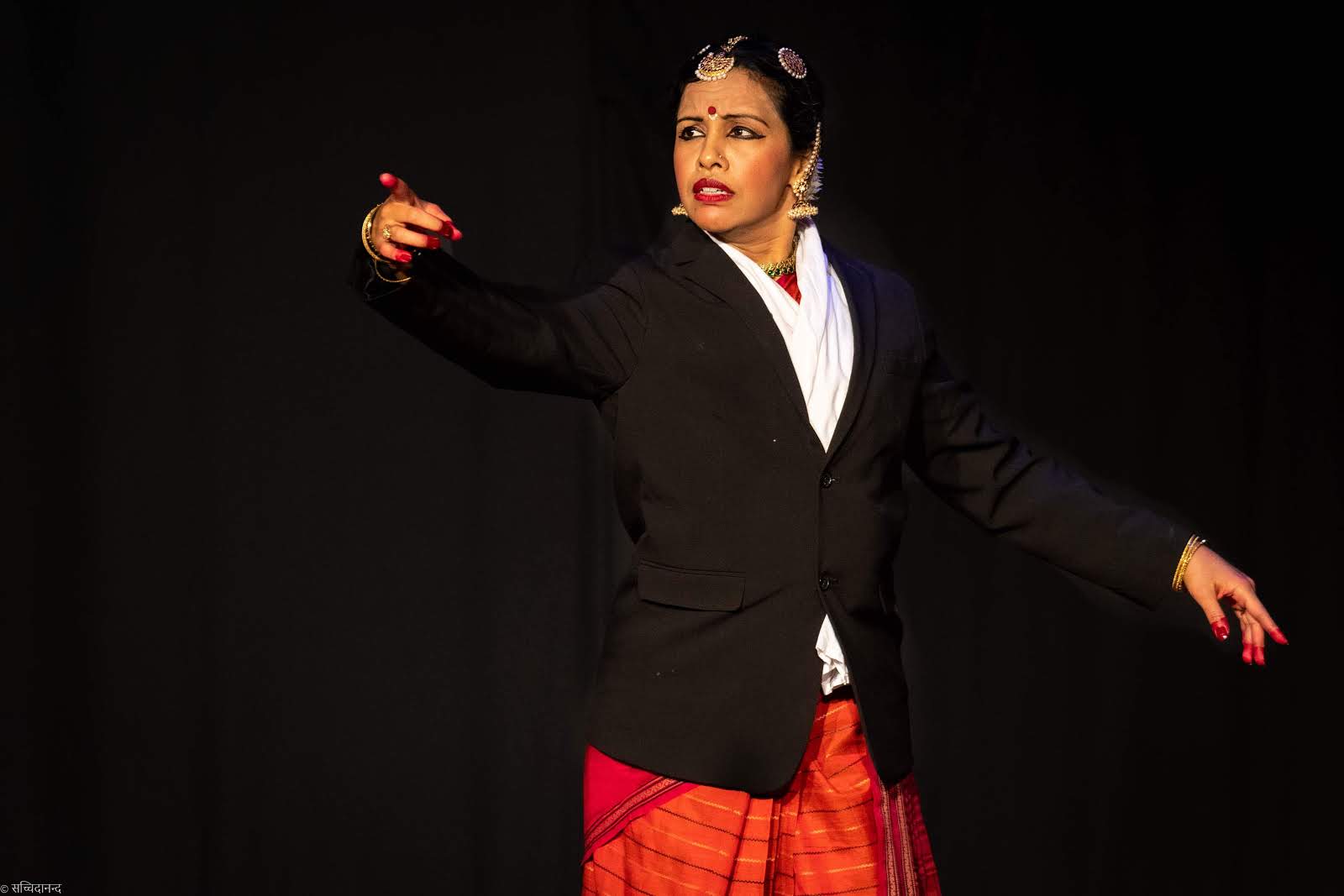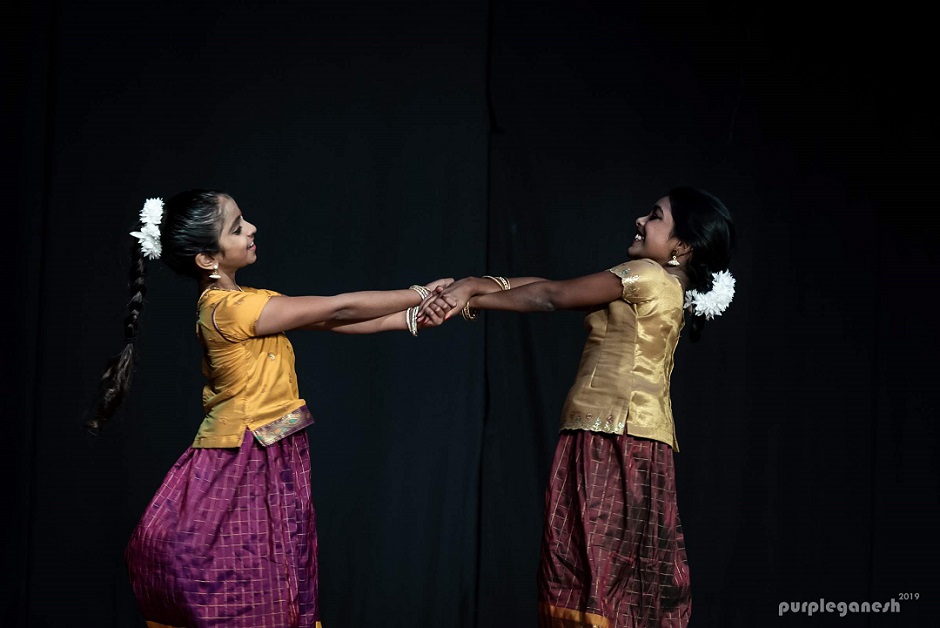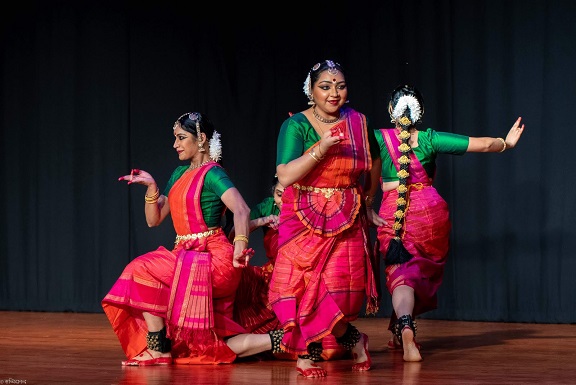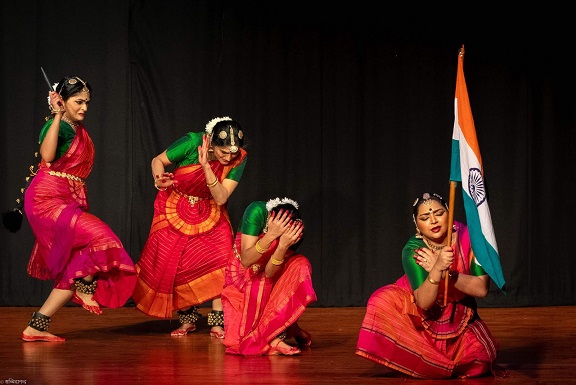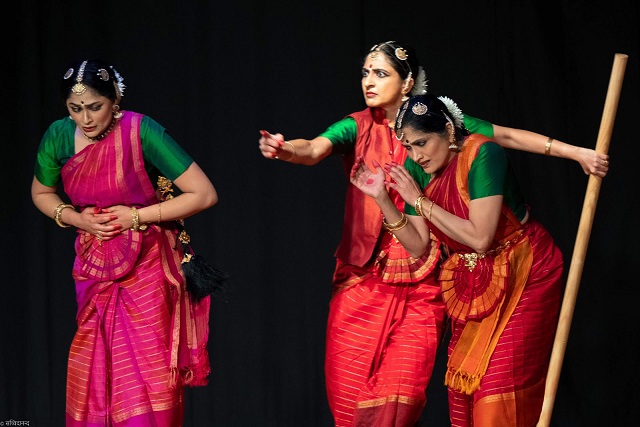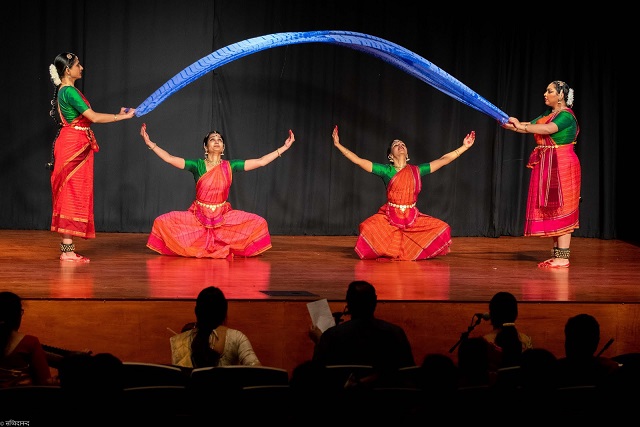Contribute
| Vendumadi Eppodum Vidudhalai - Dance Ballet Tribute To Mahakavi Subramanya Bharathi |
Janani Swamy
12/03/2019
With 2020 but a month away and human ingenuity transcending barriers across all dimensions, we witness a perplexing regression to a darker place- one far away from the vision of the great leaders of the 20th century. At such a time, “Vendumadi Eppodum Viduthalai†(“We Demand Freedom at all Timesâ€), a dance production based on Mahakavi Subramanya Bharathiyar’s (1882-1921) works, came as an affirmation of all that is noble and all that is right. The production made its world debut at the Chinmaya Mission in Andover, Massachusetts, on 10 November, 2019. The works of Bharathiyar feature often in the Bharatha Natyam repertoire as solo items and in dance drama format. What distinguished “Vendumadi Eppodum Viduthalai†was the erudition and depth to which the theme of freedom was explored, drawing from a vast cross section of his works. From an array of concepts- freedom as a proclamation, a prayer, a command, a duty, a celebration and the very substance of existence- arose the profound message of the Mahakavi. The idea for an in depth exploration of the Mahakavi’s works came from the Chinmaya Mission, Boston, an active promotor of the Indian Classical Arts in the New England area. Months of intensive collaboration between renowned musicologist and scholar, Smt. Sujatha Vijayaraghavan of Chennai and celebrated Bharatha Nataym dancer, Smt. Sunanda Narayanan of Boston then gave rise to this production- an oeuvre, featuring more than 25 of the Mahakavi’s poems on the human endeavor for freedom. The painstaking efforts of a superb top team of musicians and dancers brought the presentation to life. While talent and knowledge created form, it was their conviction and their tangible love for the works of Bharathiyar that held the audience spell bound. Led by Smt. Sunanda Narayanan, the dancers/choreographers, all from the greater Boston area, included Smt. Sunanda Narayanan, Smt. Sowmya Rajaram, Smt. Smitha Radhakrishnan, Smt. Aishwarya Balasubramanian, Smt. Manasa Jayanthi, Smt. Deepa Srinath and Smt. Sumana Rao. Music featured central in the experience and was comprised in part of well-known versions from the Carnatic repertoire as well as many poems superbly set to composition Sri Prasanna Venkatesh, also the vocalist for the performance. Delightful swara preludes, instrumental in adapting the compositions to dance format, were composed by Smt. Durga Krishnan and Sri Prasanna Venkatesh. Of very special note is the prelude in varying chatushra and tishra nadai, composed by Sri Lalgudi G.J. R. Krishnan for “Ethanai Koti Inbanâ€, tuned by his illustrious father Sri Lalgudi Jayaraman. The orchestra was led with aplomb by Senior Dancer /Guru Smt. Roja Kannan of Chennai and featured Boston area musicians including Vidushi Durga Krishnan on Veena, Sri Mahalingam Santhanakrishnan on mridangam and Smt Rasika Murali Mohan on violin. Sri Mahalingam Santhakrishnan provided strong percussion support in his first performance as a dance mridangist and Smt. Rasika Murali Mohan was flawless after joining the team as a replacement just 10 days before the performance! The presentation comprised of 5 distinct segments - Freedom in Nature, Freedom of the Nation, Freedom for Women, Freedom for Children and Freedom for the Soul- connected into a whole through refrains of “Viduthalaiâ€. The introductions to each segment, presented by Smt. Sujatha Vijayaraghavan, were, in fact, fascinating accounts of the Mahakavi’s life and lessons in philosophy. The dancers, resplendent in costumes of pink, red and green, opened the performance with a dazzling invocation of the pantheon of Hindu Gods in “Om Shakthi, Om Shakthi, Omâ€. The Gods were celebrated with joyous depictions of procession and prayer through seamless sequences of exuberant movement. This seamlessness of movement held the audience rapt and was maintained throughout the presentation as the dancers deftly moved in and out of formations as duets, trios and quartets- and at many points, a vibrant septet. The students of dance in the audience would have done well to pay close attention to these artists- for this is what they should aspire to. The caliber of their art was evident in the form and flow of their movement, the emotions they evoked in us and a perfection that comes with years of immersion and that is delightful to behold. The first segment, described “Freedom in Nature†as a joyful riot of colors, the primeval forces of the universe and the ferocity of the divine elements. Through varied movement and formations, the dancers conveyed the gentle swell of water, the sprouting of flowers and buds and trees decked with vines and kissed by bees- as well as the spirit of freedom in furious thunder and lightning, swirling water and roaring winds. Especially powerful was the imagery of “vallam paayidhuâ€, torrential waters swirling to the notes of Hamsanadham. “Freedom of the Nationâ€, the second segment, portrayed Bharathiyar’s vision of freedom for his people and his fiery rally cry to awaken and rise up in solidarity against their brutal oppressors. He invoked all to sing “Vande Matharam†and offer homage to their land, peerless amongst nations. “Aaduvome Pallu Paduvome†conveyed the exuberant joy of a unified and free people. Bharathiyar’s work on the emancipation of women was a clarion cry, a revolutionary vision for women as equals and leaders. “Freedom for Women†opened with “Karumbu Thottathile†in which the portrayal of the subjugation of women field workers in Fiji was as chilling as it was masterful. The remainder of the segment was a powerful representation of “Pudhumai Pennâ€- the emancipated woman. “Kummi Adi Tamizh Nadu Muzhudhum†was a spirited depiction of women standing up to the shameful conduct of the patriarchy and chasing away the “pishashugal†or demons that had long suppressed them. The next segment “Freedom for Children†portrayed the Mahakavi’s belief that children especially girls, must be taught to be fearless, resilient and determined. The segment started with a scene of two little girls being playful little children while as their stern teacher tells them to be serious and focus on their studies! Young Medha Ramachandran and Ramiya Sivapala simply excelled in this piece. “Freedom of the Soulâ€, the concluding segment, portrayed freedom as the ultimate truth of Shivam or oneness. This vignette interpreted this liberation as the awakening of the Mahakavi’s soul through introspection and study of the Vedas and Upanishads. The dancers and musicians brought the performance to a crescendo with the concluding thillana and a prayer for the universe, the oneness of all and the prevalence of truth- “Engum Shivamâ€. We left with the profound words of “Yennalum Azhiyadha Mahakavithai†(eternal poetry) and with the urgent message the world needs now: “Manadhil Uridhi Vendum, Vaakiniley Inimai Vendum, Ninaivu Nalladhu Vendumâ€- Let the Mind be Firm, let Words be Sweet and let Thoughts be Noble.
You may also access this article through our web-site http://www.lokvani.com/
